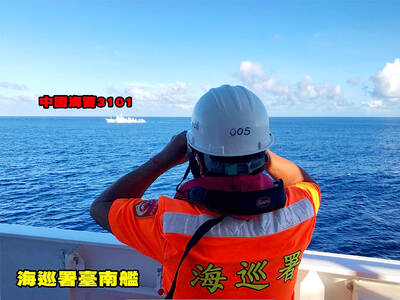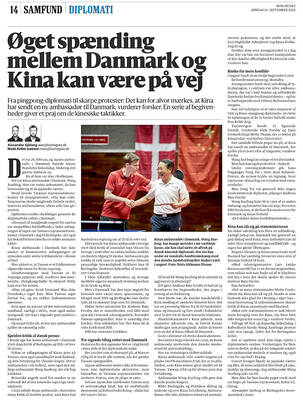An architecture exhibition organized by the National Taiwan Museum of Fine Arts opened yesterday in Venice as an associate event of the 19th International Architecture Exhibition — La Biennale di Venezia.
At the exhibition's opening ceremony, curator Hsueh Cheng-luen (薛丞倫) said "NON-Belief: Taiwan Intelligens of Precarity" showcases 17 projects that explore Taiwan's resilience in the face of uncertainty.
"NON-belief" reflects the openness, resilience and creativity that Taiwan has developed in response to its complex history, natural challenges and unique geopolitical position, Deputy Minister of Culture Lee Ching-hwi (李靜慧) said in her speech.

Photo: Tung Pai-ting, Taipei Times
The centerpiece of the exhibition is an installation called "TECH island," which shows looping images of Taiwan's landscape on electronic screens. Beneath the screens, layers of honeycomb wrapping paper are cut to resemble Taiwan's topography.
Organizers said the exhibit aims to highlight the environmental impact of technological development.
Vincent Y.C. Tsai (蔡允中), Taiwan's representative to Italy, said Taiwan's diplomatic isolation makes cultural collaboration one of its freest and most effective ways to engage with the world.
He added that the Biennale di Venezia is one of Italy's most significant cultural events in which the representative office takes part.
The exhibition runs from May 10 to Nov. 23.

The Coast Guard Administration (CGA) yesterday said it had deployed patrol vessels to expel a China Coast Guard ship and a Chinese fishing boat near Pratas Island (Dongsha Island, 東沙群島) in the South China Sea. The China Coast Guard vessel was 28 nautical miles (52km) northeast of Pratas at 6:15am on Thursday, approaching the island’s restricted waters, which extend 24 nautical miles from its shoreline, the CGA’s Dongsha-Nansha Branch said in a statement. The Tainan, a 2,000-tonne cutter, was deployed by the CGA to shadow the Chinese ship, which left the area at 2:39pm on Friday, the statement said. At 6:31pm on Friday,

PEAK MONTHS: Data showed that on average 25 to 27 typhoons formed in the Pacific and South China seas annually, with about four forming per month in July and October One of three tropical depressions in the Pacific strengthened into a typhoon yesterday afternoon, while two others are expected to become typhoons by today, Central Weather Administration (CWA) forecaster Lee Ming-hsiang (李名翔) said yesterday. The outer circulation of Tropical Depression No. 20, now Typhoon Mitag, has brought light rain to Hualien, Taitung and areas in the south, Lee said, adding that as of 2pm yesterday, Mitag was moving west-northwest at 16kph, but is not expected to directly affect Taiwan. It was possible that Tropical Depression No. 21 would become a typhoon as soon as last night, he said. It was moving in a

The American Institute in Taiwan (AIT) put Taiwan in danger, Ma Ying-jeou Foundation director Hsiao Hsu-tsen (蕭旭岑) said yesterday, hours after the de facto US embassy said that Beijing had misinterpreted World War II-era documents to isolate Taiwan. The AIT’s comments harmed the Republic of China’s (ROC) national interests and contradicted a part of the “six assurances” stipulating that the US would not change its official position on Taiwan’s sovereignty, Hsiao said. The “six assurances,” which were given by then-US president Ronald Reagan to Taiwan in 1982, say that Washington would not set a date for ending arm sales to Taiwan, consult

A Taiwanese academic yesterday said that Chinese Ambassador to Denmark Wang Xuefeng (王雪峰) disrespected Denmark and Japan when he earlier this year allegedly asked Japan’s embassy to make Taiwan’s representatives leave an event in Copenhagen. The Danish-language Berlingske on Sunday reported the incident in an article with the headline “The emperor’s birthday ended in drama in Copenhagen: More conflict may be on the way between Denmark and China.” It said that on Feb. 26, the Japanese embassy in Denmark held an event for Japanese Emperor Naruhito’s birthday, with about 200 guests in attendance, including representatives from Taiwan. After addressing the Japanese hosts, Wang